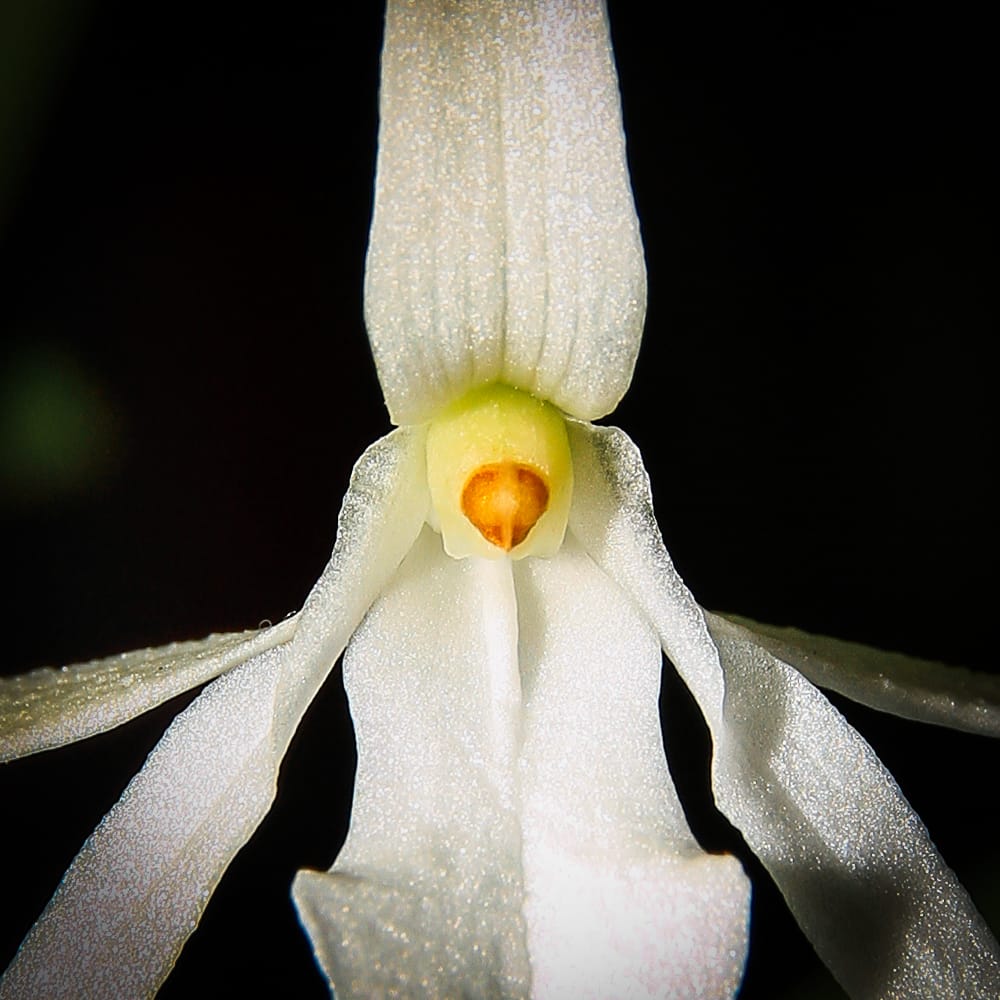
Jan 03 2025
Ghost Orchid: Fungi Family
Hidden in the shadows of swampy forests and wetland habitats, the ghost orchid (Dendrophylax lindenii) survives through an extraordinary and delicate relationship with fungi.
This rare and ethereal flower, known for its spectral blooms and absence of leaves, relies entirely on fungi for its survival. The intricate connection between ghost orchids and their fungal partners is a fascinating example of symbiosis in nature.
Unlike most plants, ghost orchids lack the green leaves typically used for photosynthesis. Instead, they have evolved to rely on their roots for energy and sustenance. These roots, which blend seamlessly into the bark of host trees, perform photosynthesis to some extent but primarily depend on specific fungi to access nutrients. These fungi colonize the orchid’s roots and help break down organic matter, supplying the orchid with essential nutrients such as carbon and nitrogen.

This relationship is vital during the early stages of the ghost orchid’s life cycle. Orchid seeds are incredibly small and lack the food reserves necessary to grow on their own. Without the help of fungi, ghost orchid seeds cannot germinate. The fungi effectively "feed" the seeds, providing them with the resources needed to sprout and establish themselves on the bark of host trees.
Even after germination, fungi remain essential to the ghost orchid’s survival. By forming a mutualistic association, both species benefit: the orchid receives nutrients, while the fungi gain access to carbohydrates produced through the orchid’s photosynthesis. This symbiotic relationship is so specific that ghost orchids are limited to environments where their fungal partners thrive.
This delicate relationship demonstrates how even the smallest organisms play a critical role in supporting some of the world’s most unique and awe-inspiring species.
Learn more at University of Florida IFAS. "Ghost Orchid."